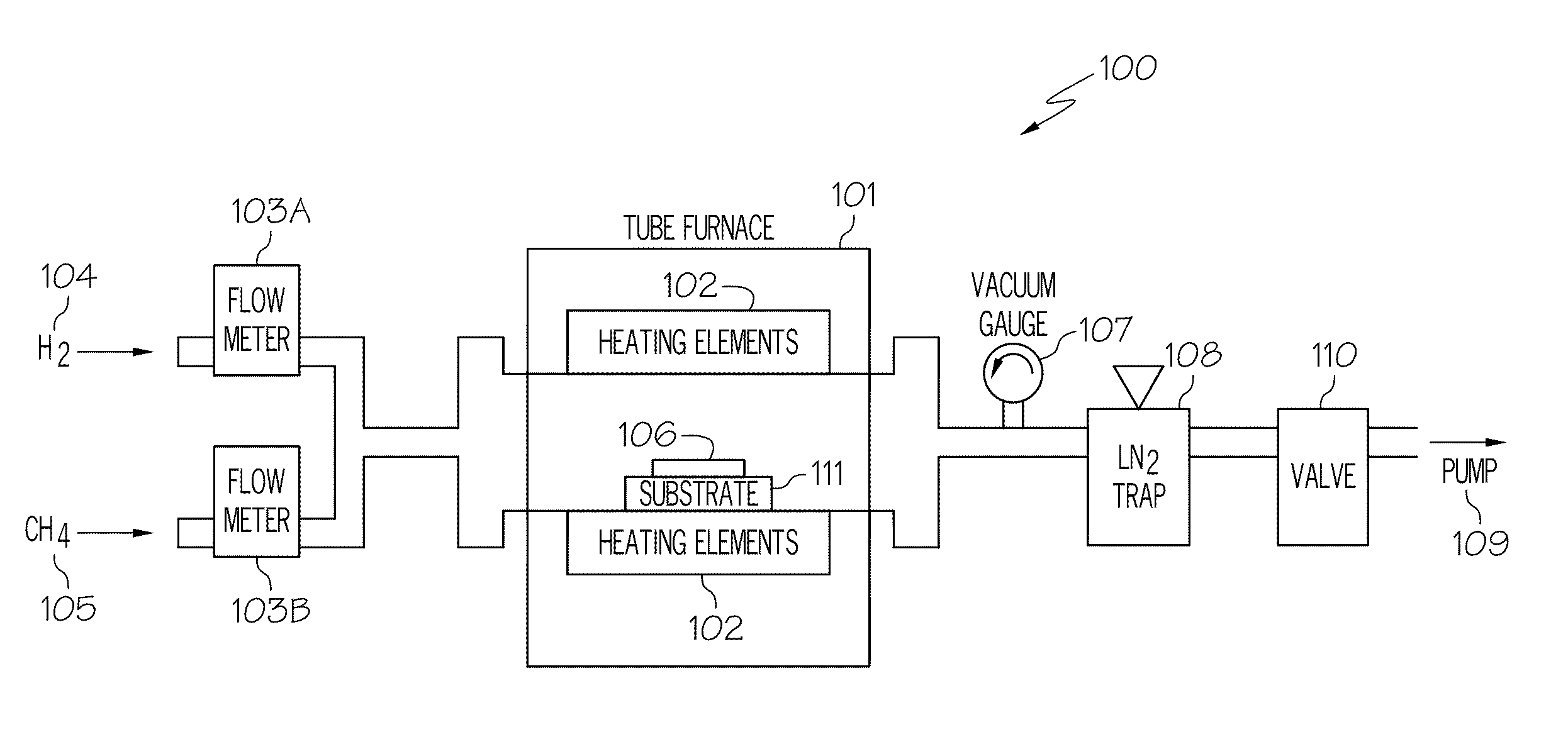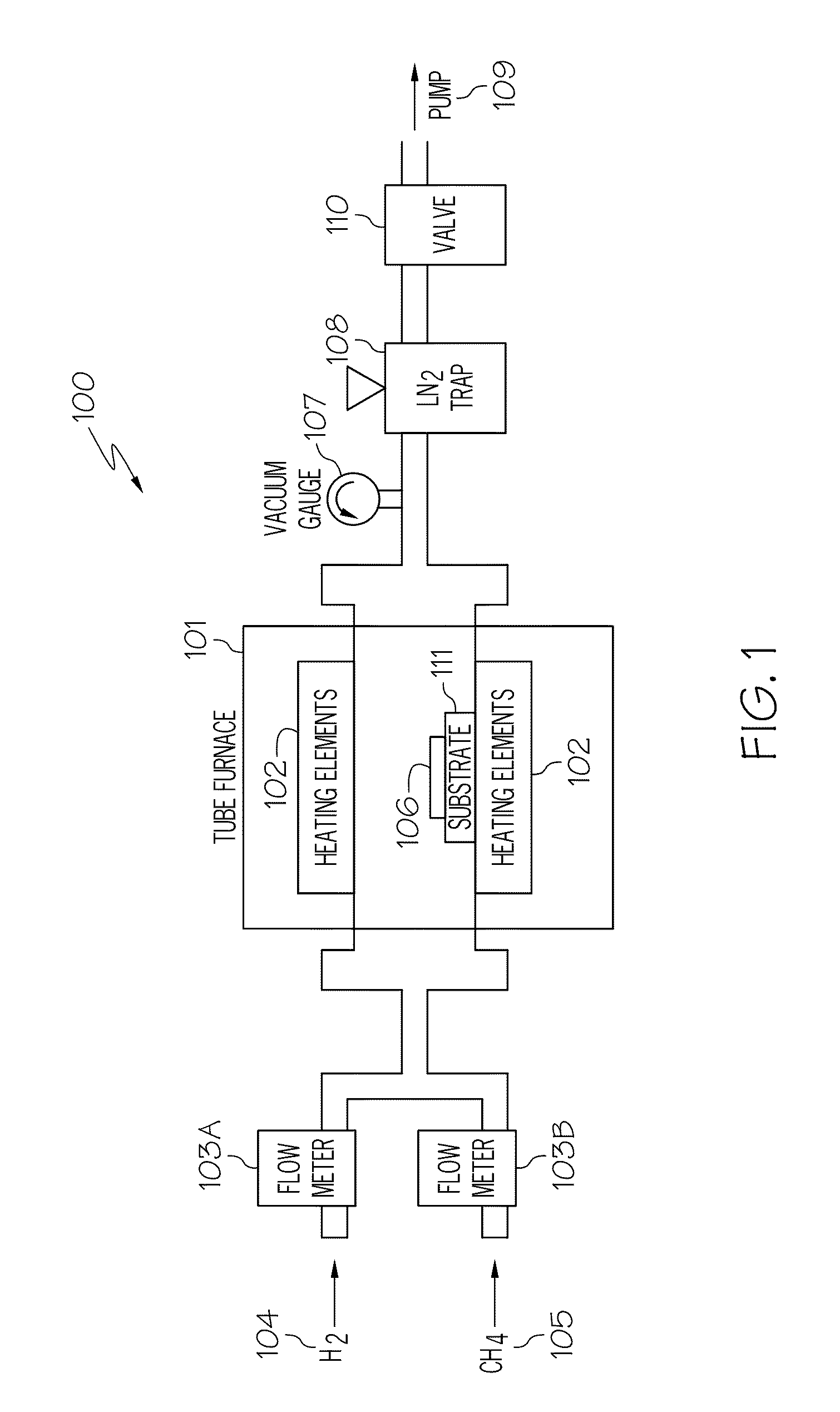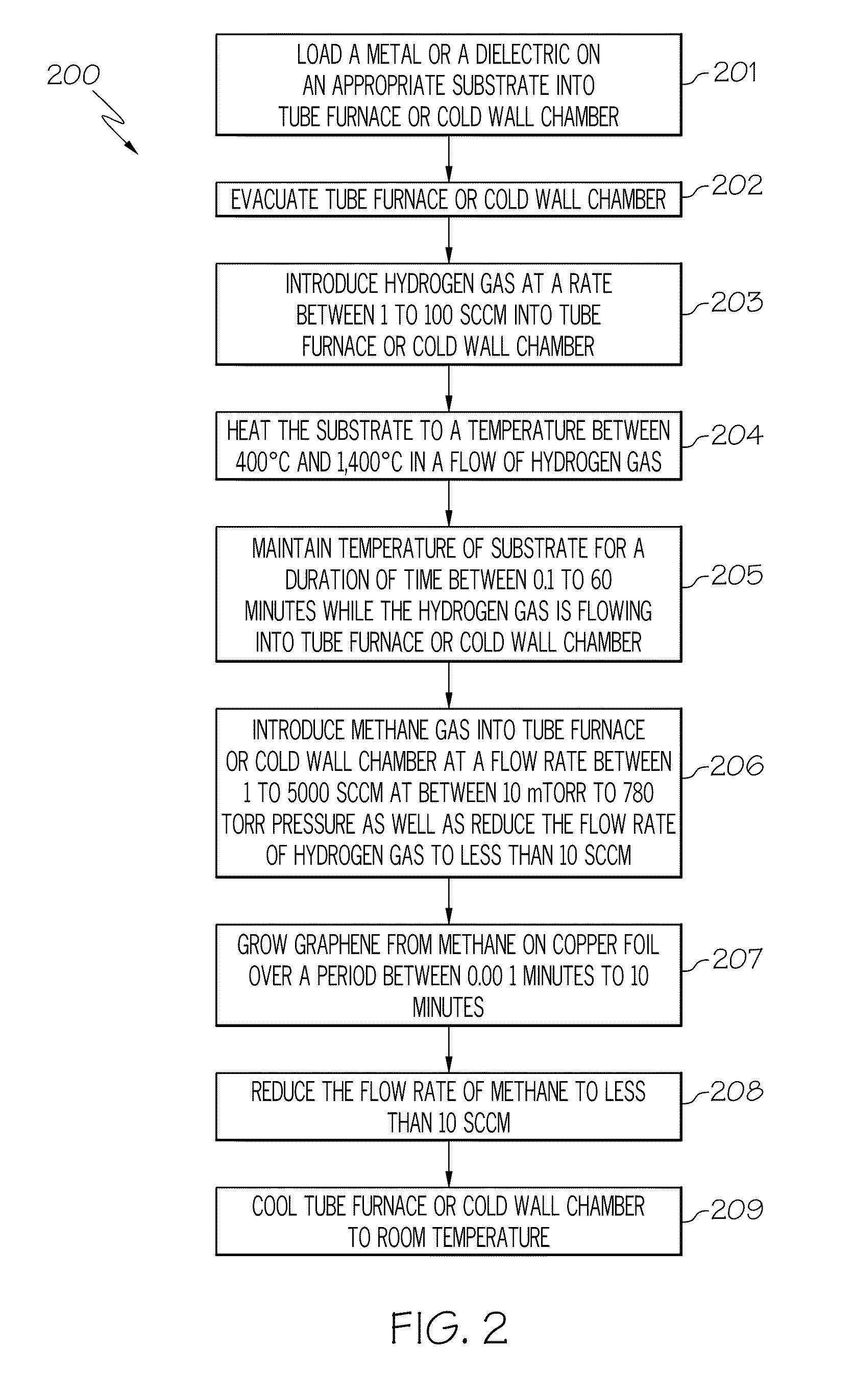Graphene synthesis by chemical vapor deposition
a graphene and chemical vapor deposition technology, applied in chemical vapor deposition coatings, coatings, material nanotechnology, etc., can solve the problems of high cost, difficult and impractical industrial environment implementation, limited graphene size, etc., and achieve the effect of increasing the flow rate of methan
- Summary
- Abstract
- Description
- Claims
- Application Information
AI Technical Summary
Benefits of technology
Problems solved by technology
Method used
Image
Examples
Embodiment Construction
[0017]As discussed in the Background section, currently, large graphene crystallites can be produced by mechanical exfoliation (repeated peeling) of graphite crystals. However, graphene produced by this method is difficult to form and is not at all scalable. Another method for producing graphene is to heat silicon carbide to high temperatures (e.g., much greater than 1,400° C.) to reduce it to graphene. This process produces a sample size that is dependent upon the size of the silicon carbide substrate used. The face of the silicon carbide used for graphene creation highly influences the thickness, mobility and carrier density of the graphene. While this process is scalable, it is limited to applications where a silicon carbide substrate is part of the device. Large area graphene films required by many applications will be difficult if not impossible to fulfill using this technique. Therefore, there is a need in the art for the synthesis of standalone graphene films with properties ...
PUM
| Property | Measurement | Unit |
|---|---|---|
| temperature | aaaaa | aaaaa |
| temperature | aaaaa | aaaaa |
| pressure | aaaaa | aaaaa |
Abstract
Description
Claims
Application Information
 Login to View More
Login to View More - R&D
- Intellectual Property
- Life Sciences
- Materials
- Tech Scout
- Unparalleled Data Quality
- Higher Quality Content
- 60% Fewer Hallucinations
Browse by: Latest US Patents, China's latest patents, Technical Efficacy Thesaurus, Application Domain, Technology Topic, Popular Technical Reports.
© 2025 PatSnap. All rights reserved.Legal|Privacy policy|Modern Slavery Act Transparency Statement|Sitemap|About US| Contact US: help@patsnap.com



